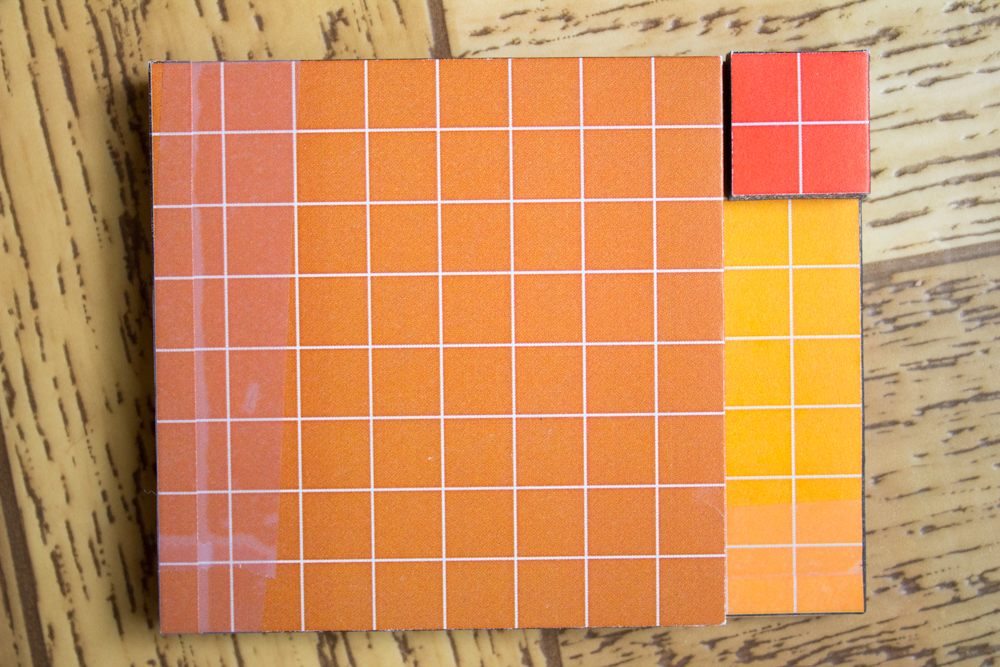Syd was simplifying radicals the other day, and not having a fun time of it. She was struggling to link the concept of factoring the radicand to simplifying, and I was trying, as usual, to think of hands-on manipulatives that might clarify the process.
I did NOT find a way to model simplifying radicals using manipulatives, alas, but while I was playing around with the decanomial square I DID find a hands-on enrichment that kids who are first learning the concept of perfect squares might enjoy.
I like this little activity because it connects the mathematical definition of the perfect square with the Montessori-style sensorial skill of eyeballing it, or even measuring it by feel. Although you're technically not allowed to eyeball stuff as mathematical proof, pattern recognition via the senses is very important. That's how kids learn to read, for one thing, and it's how IQ tests are built, for another.
Use this activity with a kid who's first learning, or reviewing, the concept of the perfect square. You can do it with paper area models that a kid can draw and color on, or you can do it, as I've done here, with the decanomial square model, which is extra fun because it has pieces you can manipulate. Kids could try to find the largest perfect square(s) that would fit inside the area model, or just find any perfect squares that would--whatever they find fun and you find helpful! Here are some models that show examples:
You can write algebraic equations with these, showing how to use the Order of Operations and/or solve for x. For example:
5 + 5 x 5 = 30
or
8^2 + 2^2 + y = 80
You just can't, you know, use them to model how to simplify radicals...
The search continues!
P.S. Here are the resources that I used to help both kids master radicals.
One Year Ago: August Favorites: Soap Operas, Broadway Musicals, and Ballet Studios
Two Years Ago: We Went to Canada and Saw the World's Highest Tides in Fundy National Park
Three Years Ago: History of Fashion: How to Put on a Doric Chiton in Ancient Greece
Four Years Ago: Cruise to Alaska Day 7: Haines
Five Years Ago: Watercolor and Wood Burned Building Block Excess
Six Years Ago: Cardstock Covered Wagons on the Oregon Trail
Seven Years Ago: Demonstrating the Commutative Property of Addition using Cuisenaire Rods
Eight Years Ago: Cave Painting with Story of the World Ancient Times
Nine Years Ago: Giant Cardboard Constructions
Ten Years Ago: Have You Climbed a Tree Lately?
Eleven Years Ago: Where Small Things Will Soon be Sorted
Twelve Years Ago: Scooby Dooby Doo, Where are You?











No comments:
Post a Comment